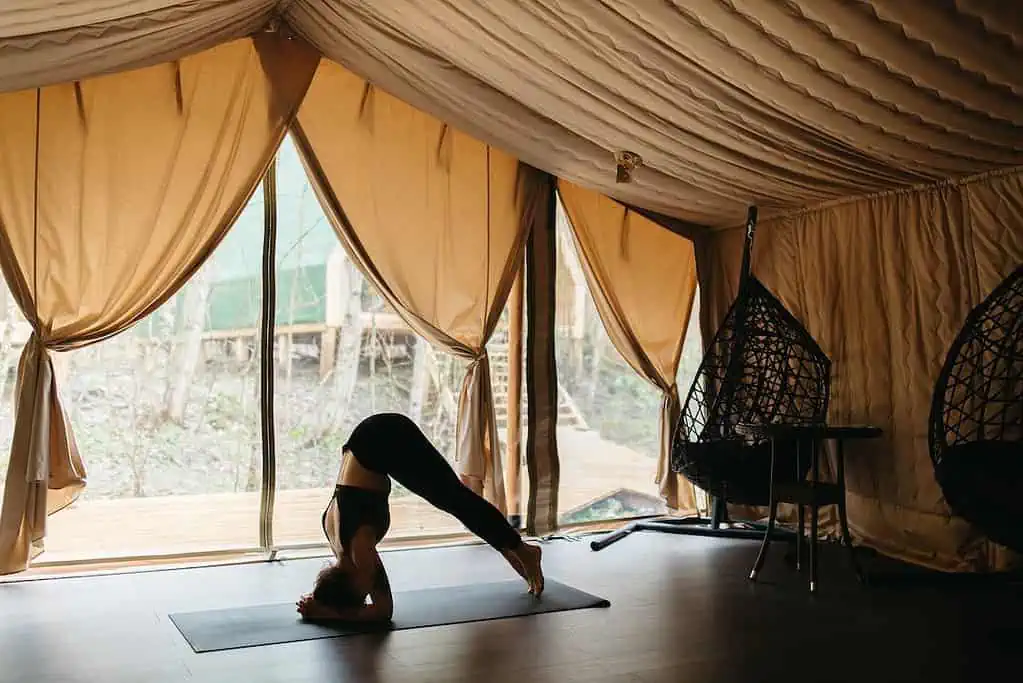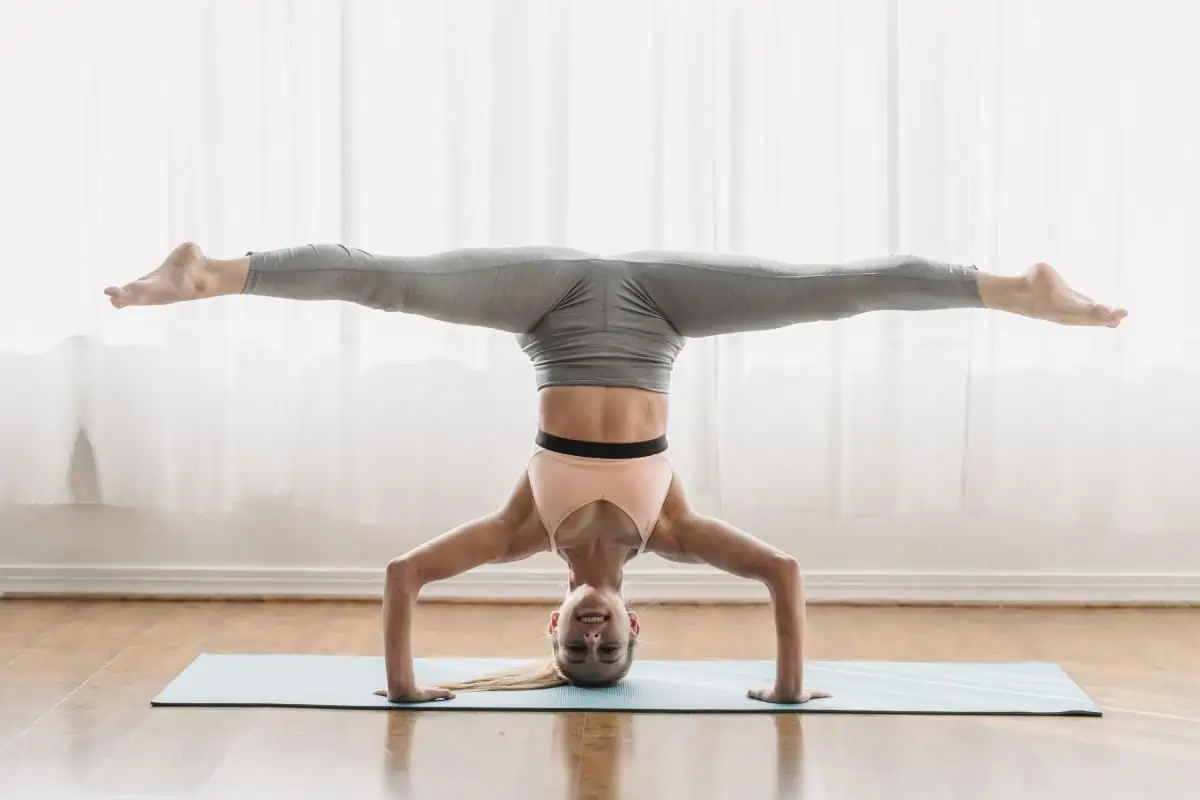Are headstands a part of your yoga practice yet? If not, it’s about time that you started to include them in your yoga asana routine, for the plethora of health benefits that they can provide.
Although headstands are considered to be an advanced yoga inversion, even the best yoga teachers started off as beginners. Don’t let this inverted position scare you away, for there are many safety measures you can take to get into a successful headstand.
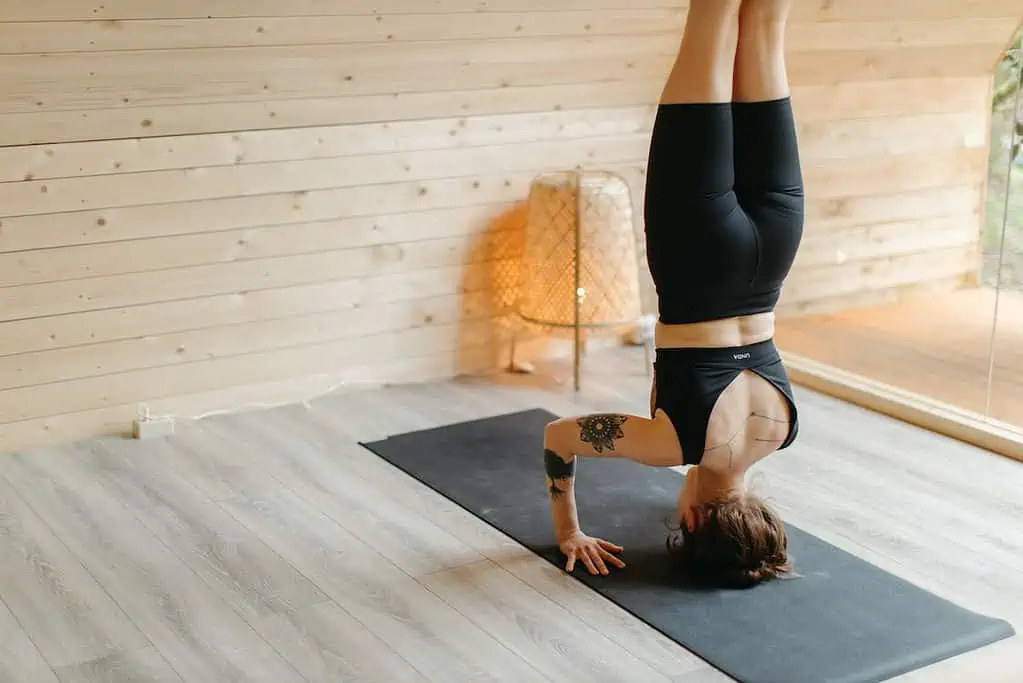
Contents
What is a Headstand?
The sanskrit word for headstand is Sirsasana – “sirsa” meaning head and “asana” meaning yoga pose.
A headstand is a yoga pose that involves tipping the body upside down and balancing on your head. There are variations of how to position your hands to come into either a supported headstand (with elbows connected to the ground) or a tripod headstand (with just the palms of your hands connected to the ground).
Being upside down does put your entire body weight onto the head, and if you are not used to having too much weight on your head, neck and shoulders, then it is wise to slowly build up to the full variation of this pose. But as you train to build up strength, every small step along the way will get you used to being in a yoga inversion. The more time you spend upside down, the more you will get to soak up the incredible physical benefits and mental health benefits of being in a headstand too!
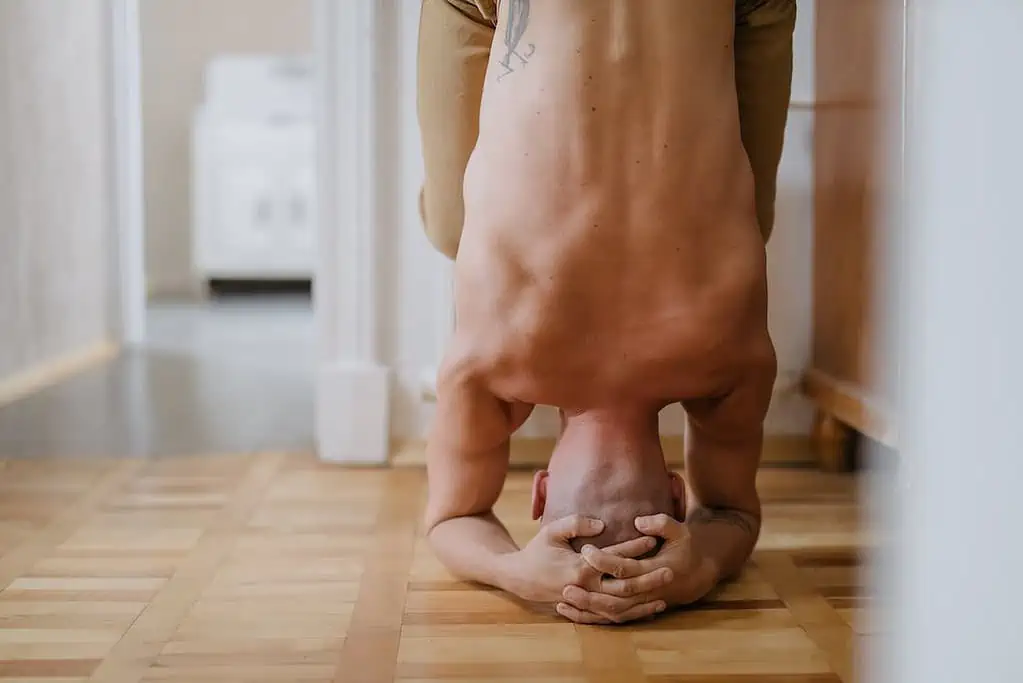
What are the health benefits of Headstands?
Turning your body upside down into a headstand has numerous positive health benefits. Not only does it impact overall well being, but it does this through being a valuable addition to support many of the body systems. Let’s take a look at how a headstand benefits your body:
Increases blood flow and improves blood circulation
Being upside down means using gravity to send blood flow in the opposite direction through your body (i.e. instead of gravity normally sending blood to the feet, it now sends it to the head!)
Although the cardiovascular system does a great job of pumping blood around the body as it is needed, sometimes when the body gets a little stagnant, it can pool in the extremities, particularly the feet. An easy way to drain this blood is to put your feet up higher than your head and let gravity do the rest of the work.
Overtime and with regular practice, headstands will also improve blood circulation because the body will be used to experiencing the different effects of gravity. This also creates a stronger flow of oxygen around the body, as the blood cells carry more oxygen to new places.
Training your breath to increase your lung capacity, combined with getting upside down regularly, will ensure that the oxygen uptake in your cells is efficient and powerful enough to energize your entire system!
Some yogis even say that this extra blood flow to the head can reduce the chance of hair loss.
Drains the lymphatic system
Similar to the force of gravity on the circulatory system, gravity also works on the lymphatic system to drain the lymph nodes, and help to eliminate wastes and toxins from the body. The lymphatic system is an important part of your immune system, so the more often you work to stimulate and refresh the lymphatic fluid in your body, the healthier you will be.
Builds strength in the entire body
To practice an headstand pose, you need to have a certain amount of strength and balance in your body. Even just raising and lowering the legs requires sufficient core strength, plus, you need to think about the stability you require in your core muscles to keep your feet above your head for long periods of time!
If you don’t have strength in the body, it will put too much pressure on the bones alone and may cause injuries. Therefore, the more you practice headstand pose (as well as a number of preliminary poses), the stronger you will become and greater muscular endurance you will build! Muscular strength and endurance is not only good for yoga, but all aspects in your life regarding health and fitness.
Resets the nervous system
Another one of many health benefits of headstand pose is the effect it has on the central nervous system. The nervous system is responsible for fight and flight mode, as well as rest and digest mode. To be in a balance position in yoga, particularly an inverted balance position, you must have a sense of calmness about you.
To create this calmness, you must also create calmness and groundedness in the entire body. This will hopefully reduce the amount of stress hormones that are being released, and it will support the adrenal glands to rest and rejuvenate. Long deep breaths as you hold headstand pose will support the relaxation process too.
Supports digestive organs and releases trapped gases
Being upside down can also help to relieve trapped gas in the belly or digestive system. By creating new postures with the body, it is a chance for gas to be released and the digestive system to be soothed.
In saying this, it is also advised not to eat before practicing headstands or any yoga practice, as the body needs enough time to digest properly after a meal.
Provides a new perspective on life
One of the best headstand benefits is that it creates a new perspective on life! Looking at the world from upside down, with fresh blood flow to the mind and brain cells, can create new ways of thinking or seeing situations with new eyes.
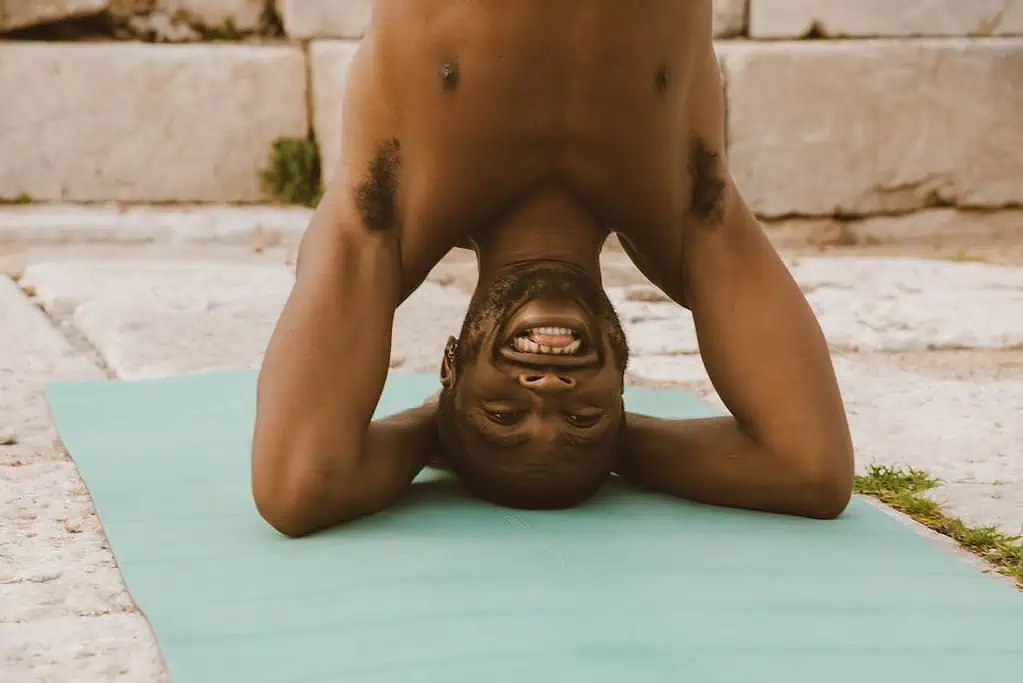
Contraindications – who should not try headstands?
For some, headstands may do more harm than good. If you suffer from any of the following conditions, you should consult a physician before attempting any headstands or upside down poses:
- Neck injuries
- Spinal injuries (disk slips, too much compression, or existing pain)
- Injuries in the shoulders and arms
- People with high blood pressure or prone to dizziness
- Pregnant women (unless they already have a very strong practice of yoga asanas including headstand)
- Women who are currently bleeding in their menstrual cycle.
Beginner yogis should consult a yoga teacher before jumping into a headstand. This will ensure that you avoid compressing the spine and you will prevent injuring the body.
If you are new to headstands, there is a chance you may feel dizzy when the blood rushes straight to the head. This is why it is also wise to have someone supervising you until you become confident in your headstand pose.
If you want extra support, you may also like to try using a Headstand Stool to help you gain confidence in your headstand abilities!
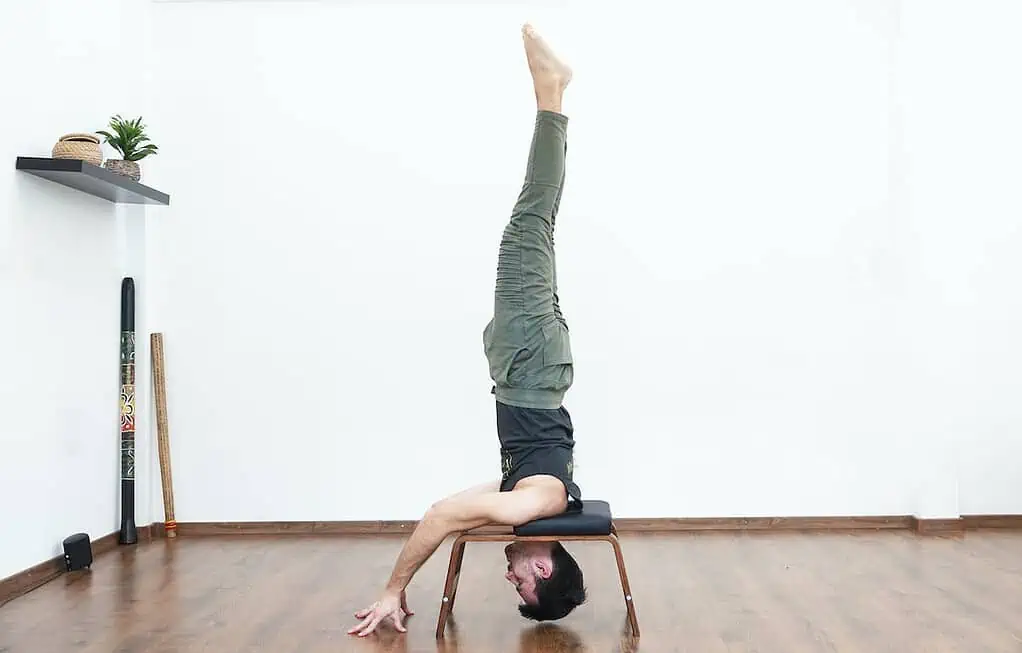
Now you know the benefits… let’s try this Yoga Pose!
To headstand safely, knowing your body and its limits is important. You will need a certain amount of upper body strength, as well as a sense of confidence (that you hopefully built up from attending previous yoga classes!).
When you are ready to try headstand pose, come to a child’s pose to begin. Before you even make your way into headstand position, take a few deep breaths, center yourself and allow your body to relax (and to stop producing stress hormones).
Now, place your upper arms on the floor in front of you, the width of your shoulders should match your elbow width. Interlace your hands, including your pinky fingers, and then slowly straighten your legs into a triangle shape with your body. Hips are high, feet and forearms are still connected to the floor.
Lower your head to rest between the palms of your hands. Allow some of your body weight to drop into the head, but still stay active in the upper body to ensure that your neck and head are supported.
You may choose to stay here, in a variation of dolphin pose to build strength for your headstand shape.
If you do want to float your feet above your head, use your core strength to gently lift your feet off the floor and extend them to the sky.
Take a few deep breaths in here. Enjoying your headstand position.
Feel the benefits moving through your body. Any amount of leftover stress hormone melts away. The blood flows to your head, and the headstand helps to support the endocrine glands, adrenal glands and pituitary glands. This yoga pose is awakening a deep sense of well-being within you.
When you are ready to release your feet back down to the floor, use your core strength to land lightly. Drop back into a child’s pose and breathe deeply.
After spending time in a headstand pose, it is essential to transition back slowly, to allow the compression to be released softly, but also to fully integrate the headstand benefits into your body and mind.
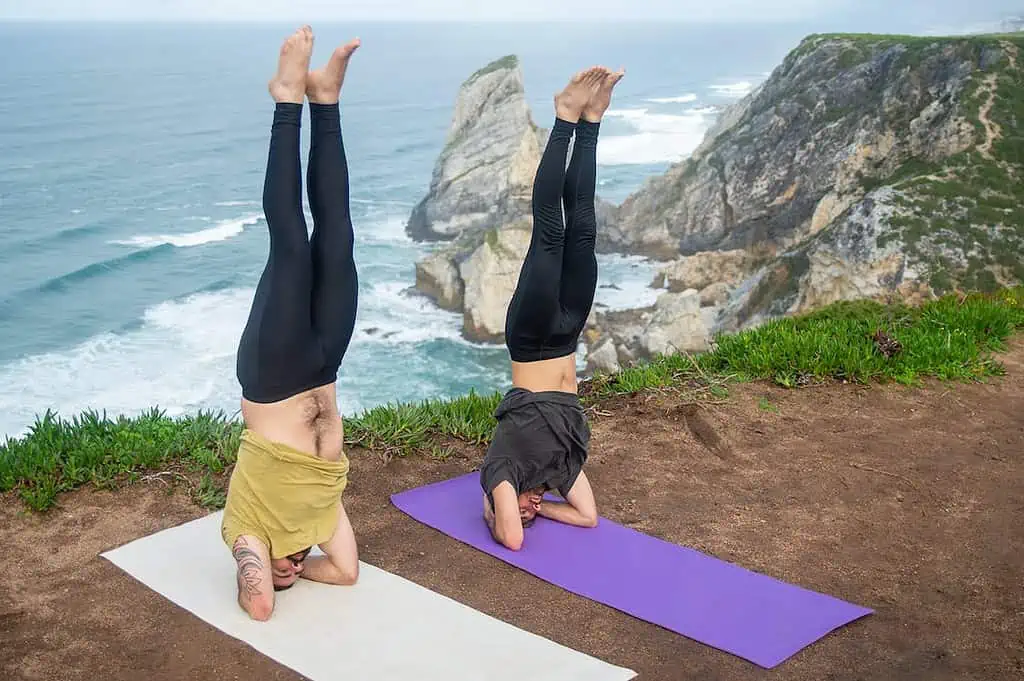
Frequently Asked Questions
Is it good to do a headstand everyday?
Yes! If you are familiar with headstand pose, you can absorb the benefits daily by spending some time in this wonderful position. The headstand yoga pose will provide both short term and long term benefits for you if it is one of the yoga poses in your daily yoga practice.
How long should I stay in a headstand?
If you are new to headstand position, start with smaller amounts of time in this pose (for example, three to five deep breaths), so that you actually experience stress relief, not stress!
Over time as you become more comfortable in your headstand, you may stay for a few minutes (10 to 30 deep breaths) to play around upside down!
